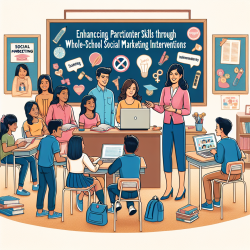Introduction
In recent years, mental health issues among children have become a significant public health concern in the United States. With increasing awareness, parents are exploring various treatment options beyond conventional methods. A recent study published in BMC Complementary and Alternative Medicine sheds light on the use of Complementary and Alternative Medicine (CAM) among children with mental health issues. This blog aims to explore the findings of this research and how practitioners can use these insights to improve outcomes for children.
Understanding CAM Usage Among Children
The study analyzed data from the 2012 National Health Interview Survey, focusing on children aged 4-17. It revealed that 19.2% of children with mental health issues used CAM therapies, compared to 10.1% of children without such issues. The most popular CAM modalities included herbal remedies, mind-body therapies, and chiropractic care.
Why Parents Choose CAM
Parents reported several reasons for opting for CAM therapies:
- They are perceived as helpful (69.2%).
- They are natural (55.9%).
- They offer a holistic approach (44.7%).
Interestingly, only 18.4% of CAM usage was recommended by medical doctors, highlighting a gap in communication between healthcare providers and families.
Implications for Practitioners
For practitioners, these findings underscore the importance of understanding and discussing CAM therapies with families. Here are a few ways to integrate these insights into practice:
- Educate Yourself: Familiarize yourself with common CAM therapies and their potential benefits and risks.
- Open Communication: Encourage open dialogue with families about their interest in CAM and provide evidence-based guidance.
- Collaborate: Work with CAM practitioners to ensure a cohesive treatment plan that aligns with the child’s needs.
Encouraging Further Research
While this study provides valuable insights, it also highlights the need for further research into the efficacy and safety of CAM therapies for children. Practitioners are encouraged to contribute to this growing field by participating in research initiatives and sharing their findings.
Conclusion
As the use of CAM therapies continues to rise, practitioners must stay informed and engaged in discussions with families. By doing so, they can help ensure that children receive comprehensive and effective care. For those interested in delving deeper into the study, the original research paper can be accessed here.










